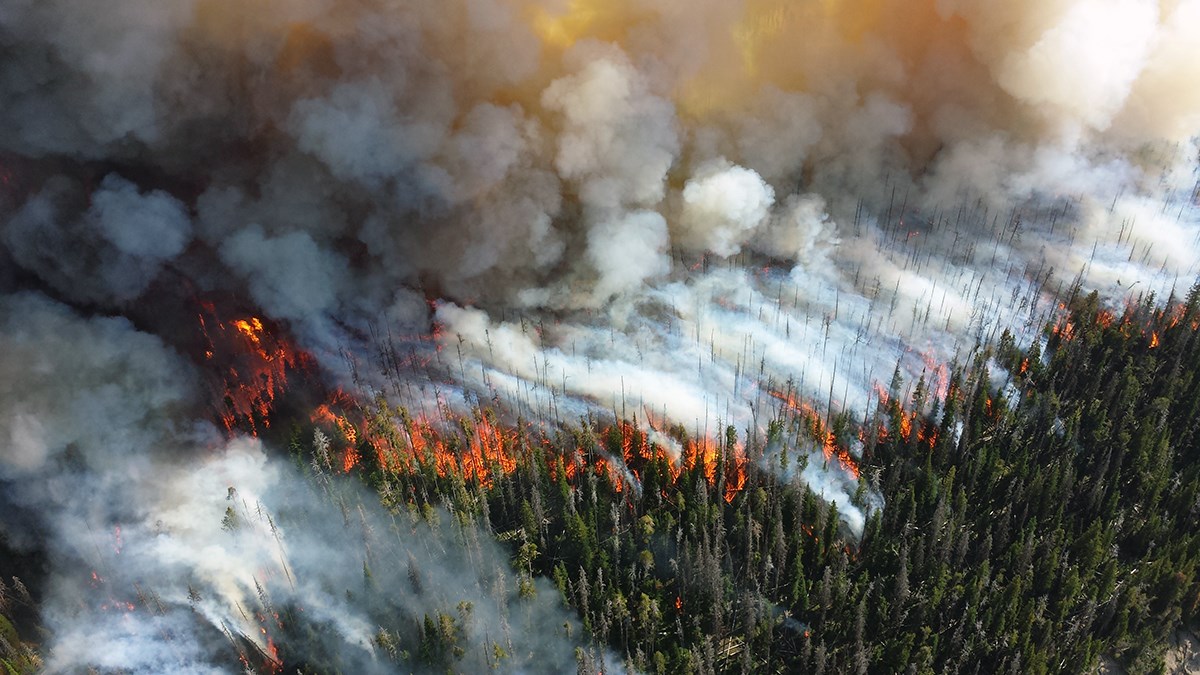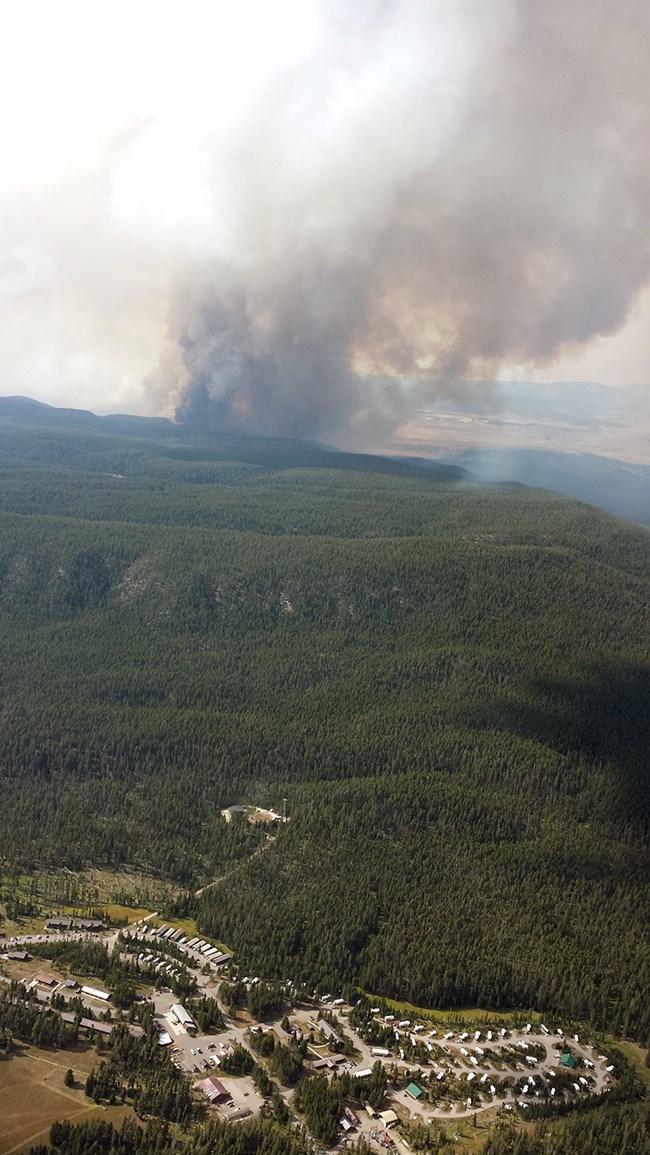Last updated: December 14, 2017
Article
Yellowstone National Park Staff Manage Multiple Fires with Flexible Strategy

“We are always mindful of the impacts to the visitors, as well as park and concession employees. Our Druid Complex successes came with the help of interagency partners embracing fire policy and managing fire across a large landscape with safety and point protection always the key factors.”—John Cataldo, Yellowstone National Park fire management officer

The Yellowstone National Park fire management mission directs staff, whenever possible, to manage lightning starts to allow fire to play its natural role in the ecosystem as a process of ecological change.
In August 2013, a series of thunderstorms ignited six fires scattered throughout the 2.2-million-acre park. Park management agreed to manage the fires, called the Druid Complex, by monitoring and providing point protection to infrastructure while reaping the resource benefits.
The Druid Complex included the 7,097-acre Alum fire, the 4,238-acre Alder fire, and the 155-acre Druid fire. The Druid fire started August 9 on Druid Peak above the northeast entrance road. The Alder fire, discovered August 14, was burning on a peninsula on the south end of Yellowstone Lake hemmed in by water and a recently burned area. The Alum fire, also discovered August 14, had the most potential to affect park infrastructure, as it was located southwest of Mud Volcano, about five miles north of Fishing Bridge. The Alum fire grew slowly until August 17, when it ran 5.5 miles across relatively flat terrain in eight hours, growing from 3 acres to about 3,500 acres.
After the Alum fire’s rapid growth, the park ordered personnel and equipment required to provide protection to the lake developed area. To help with the fire’s long-term management, the park also ordered a National Incident Management Organization (NIMO) team.
For the next two days, the fire doubled in size, spreading to the east and south to within 2.5 miles of the lake development. It had approximately 9 miles of uncontained fireline spread across the Central Plateau. During tourist season, Lake Village houses around 5,000 people, including park and concessionaire employees residing there and visitors staying in the historic Lake Hotel or surrounding campgrounds.
Ordering a NIMO team proved an effective choice, especially due to the potential for the complex to last until a season-ending event. A break in the weather slowed the fires’ spread during the team’s stint, but the complex had the potential to be a long-duration event requiring multiple transfers of command between teams until the fire season ended. NIMO brought a 20-person team and lived up to their mission to be responsive, flexible. and adaptive to fit the needs of the park. This also meant the Northern Rockies Geographic Area avoided having to fill a short team order, which would have fractured the one remaining unassigned Type 2 incident management team during peak fire season. Yellowstone supported the NIMO team’s priority to provide training and successional planning, resulting in several trainees performing various roles. Most of the NIMO team was assigned only from August 21-30 and left tangible products, such as a tactical firing plan and an aerial ignitions plan.
Providing long-term plans is essential, particularly in late August. Historically, a fire-season-ending event in Yellowstone arrived predictably in early September. However, in recent years that event has not occurred until early October. The 2009 Arnica fire, which burned just south of the Alum fire, made a significant run on September 25, forcing the closure of the Grand Loop Road. Knowing the Alum fire still had potential to affect the lake area, the park was prepared to take decisive steps to protect the lake infrastructure, including nearly 200 structures. In 2004, the park completed a 10-acre fuels project on the southwest side of the lake employee housing to provide a buffer from a fire pushed by the predominant southwest winds. But the primary threat from the Alum fire would likely be from the north/northwest with a passing cold front, typical in the fall. Unbroken stands of mature lodgepole pine provided a continuous fuel path to the lake employee housing area and a power substation west of Grand Loop Road. Firefighters augmented the buffer by creating an indirect line that extended the existing fuels project along a powerline corridor.
Yellowstone is a complex environment for managing fires, especially with the number of visitors. While rangers were testing how much time evacuation notices would take in the lake area, some concessionaires voluntarily evacuated. The experience prompted needed discussions among the rangers, fire management, and concessionaires so the area is better prepared for any future evacuations.
“We are always mindful of the impacts to the visitors, as well as park and concession employees,” said fire management officer John Cataldo. “Our Druid Complex successes came with the help of interagency partners embracing fire policy and managing fire across a large landscape with safety and point protection always the key factors.”
The safety record of the Druid Complex was the other notable success. To lessen firefighter exposure, fire managers used some heavy equipment to create the indirect line around the developed area, resulting in work equaling more than 13 person years completed without injuries.
Contact: John Cataldo, Yellowstone National Park fire management officer
Email: e-mail us
Phone: (307) 344-2182
